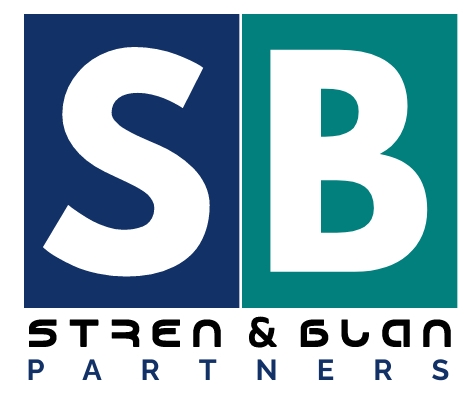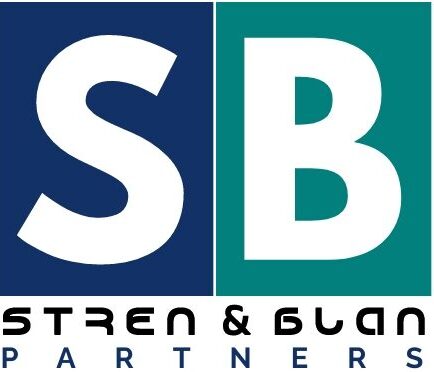Introduction
Since the launch of the model called ChatGPT by OpenAI in November 2022, there have been disturbing conversations around the impact of the new technology on work and humans generally. Many have asked if this artificial intelligence (AI) tool will take their jobs, seeing that it can do almost everything humans currently do, even better and faster. Besides the anxiety around the future of jobs, ChatGPT AI also poses a threat to human creators, as it is designed mainly to create content through human interactions. To this end, this article examines the new technology and the intellectual property issues it presents.
Meaning of ChatGPT.
ChatGPT-3, also called Chat Generative Pre-Trained Transformer or the Third Generation Generative Pre-Trained Transformer AI, is a chatbot that responds to users in a realistic way by using machine learning techniques and a large amount of data, which makes it possible to predict the most accurate response to a question. ChatGPT works by using a large language model trained by OpenAI. The model has been specifically trained to generate human-like text based on the context of a conversation. This simply means that, from the dialogue format, ChatGPT can answer follow-up questions, admit its mistakes, challenge incorrect premises, and reject inappropriate requests. It is built to generate content like poems, term papers, debug codes, answer questions, and more. The AI can converse in a natural way by understanding context and is capable of learning from its interactions with people. With this new AI tool, the future of work is in danger because the AI can do jobs that humans currently do. For example, chatbots are used to teach students and provide answers to their questions, provide customer support, sales and marketing, personalised medical advice, recruitment processes, provide legal advice through research, and many more.
How ChatGPT Relates to Intellectual Property
Generally, the connection between intellectual property (IP) and ChatGPT can be narrowed down to the relationship between IP and AI and the protection of AI creations like ChatGPT. Intellectual property simply refers to creations of the mind or the human intellect, and this can take many forms such as copyright, patent, industrial design, trademarks, plant variety, geographical indication, and trade secrets. AI on the other hand was first coined by John McCarthy in 1956 and was described by him as the science and engineering of making intelligent machines.These are intelligent machines that can process and interpret language, mine and analyse data, and create artistic and original works. Because intellectual property protects mental creations and has done so since time immemorial, the emergence of technology-induced creations that are not mental creations raises the issue of authorship and ownership of AI-generated works. Both humans and AI are now “creators” in the basic sense of the word, however, our old-fashioned legal system only recognises works created by humans and not a computer.
While the protection of AI-generated works is still under debate, the AI itself enjoys IP protection. As noted by the World Intellectual Property Organisation (WIPO), AI-related patents have been published. In addition, copyright protects software codes that constitute the building blocks of AI programmes. To be eligible for copyright protection, such codes must be reduced to writing. Other forms of IP protection related to AI include the protection of the AI algorithm as trade secrets and the protection of the robot names, such as the “ChatGPT” as Trademark.
Intellectual Property Issues Associated with ChatGPT
Ownership and Copyright Protection of ChatGPT AI-generated Content
Although the Terms of Use provide that ownership of the content generated by ChatGPT belongs to the user, to what extent is the content subject to copyright protection, seeing that it is not original. As stated earlier, the Terms of Use contain a licence clause that permits OpenAI to retain the right to use the content. This means a right to generate the same content for another user.
In Nigeria, a work is not protected by copyright unless the conditions set out in Section 1 of the Copyright Act are met. These prerequisites include fixation, originality, and putting forth sufficient effort to confer the work’s original status. With this clause, it is very unlikely that ChatGPT’s content is protected by copyright because it is neither original nor made by a person. This is especially true when it is expressly stated in the terms that the AI may create the same or related content for other users. Since it states that the AI may produce similar content across users, the responses generated for other users are not considered the content of the first user, even where the responses are similar. How then can the second user claim ownership to content that has been produced for another user?
Protection of AI-generated Content
The question of whether copyright laws apply to works created using AI is becoming more and more controversial as this trend grows. The majority of the copyright laws do not expressly address AI-generated art as being eligible for protection under the law. This is largely due to the fact that the laws only recognise humans as creators. However, with the growth of AI and now ChatGPT, which have the ability to produce content like humans, it is worth noting the extent of protection for these works. Although the terms of use of ChatGPT assign all rights to a piece of content to the user, the extent of copyright protection for this content is unclear, as stated earlier in this work. In addition, what happens where the terms of use do not assign copyright? Who owns the copyright in AI art, and what do the laws provide?
In the United States, for instance, “an image generated through artificial intelligence lacks the “human authorship” necessary for protection”. Therefore, the US Copyright Office (USCO) said that works that were not made by humans do not qualify for copyright protection. Again, if an AI or ML system is listed as the inventor, the US Patent and Trademark Office (USPTO) will reject the application and not grant a patent.
In September 2022, the US Copyright Office (the “USCO”) granted a first-of-its kind registration for a comic book generated with AI assistance, which was rather surprising and revolutionary. Kristina Kashtanova, the artist who created Zarya of the Dawn, explained that the USCO had asked her to provide details of the process demonstrating that there was significant human involvement in the creation of this graphic novel. However, a few months later, the USCO issued a cancellation notice to an artist who had registered a novel written by an AI system in October 2022. The author has been granted 30 days to appeal USCO’s decision, during which the copyright is still active, and her lawyer has already submitted a letter to testify regarding the human involvement in the creation of AI art, arguing that it could enjoy copyright protections since the creative process of using generative AI is “essentially similar to the artistic process of a photographer’s selection of a subject, a time of day, and the angle and framing of an image.” The case is still pending in hopes that it will provide more insight into whether AI-generated works are eligible for copyright protection and set a precedent.
Again, in February, the USCO upheld a decision not to register the novel which was made by an AI system created by Stephen Thaler and titled “A Recent Entrance to Paradise.” The appeal was refused on the grounds of the non-human nature of the author. Earlier in the year, the USPTO refused a patent application for Device for the Autonomous Bootstrapping of Unified Sentience (DABUS), an AI device, on the grounds that the inventor was not human. The decision was upheld by the US Court of Appeals for the Federal Circuit.
A US court had earlier ruled in Naruto v. Slater that an animal, in this case a monkey, cannot be granted copyright protection as the right is only attributable to humans.
The position in the UK is somewhat interesting. In the UK, works created without a human author (computer-generated) are protected under copyright and granted 50 years of protection under UK copyright law. In addition, a patent may be granted for an AI-assisted invention, provided the application satisfies the legal requirements set out in the UK Patents Act 1977.
In Germany, the federal Patent Court set aside a decision of the German Patent and Trademark Office to grant a patent to the statutory inventor, who is a person. Similarly, in Nigeria, Section 2 of the Copyright Act, ties the concept of authorship to personhood, that is, an individual who is a citizen of or domiciled in Nigeria or a body corporate incorporated by or under the laws of Nigeria. Although the Nigerian Copyright Act offers protection to computer programs or software codes, it does not contemplate a situation where the author of the program will be non-human.
In 2020, the European Commission proposed a “four-step test” in its “Trends and Developments in Artificial Intelligence – Challenges to the Intellectual Property Rights Framework” report. The test provides for the following interrelated criteria to be met for an Al content to qualify as “work.” These include: production in literary, scientific or artistic domain human intellectual effort, originality and creativity and expression.
Pursuant to the above-mentioned criteria, the Al-creations produced with human intervention might be classified as “work” in some circumstances and, hence, be protected under the EU copyright law. Artworks created entirely by Al, on the other hand, are unlikely to qualify as “work”, thus, unlikely to be protected under the current EU copyright law.
Conclusion
In the wake of technological advancement, the state of law will continue to be shaken by innovations and creativity. The introduction of ChatGPT to humans together with its interesting features was expected as technology has always been on a journey to solve many challenges being faced by humans, even if it means replacing them. This poses a threat to not only job seekers but also creatives whose hard work could be exploited by these AI tools without sufficient acknowledgement. Although the law currently does not recognise a non-human author, recent technological developments have brought us to the sad realisation that in the coming years, stakeholders will begin to push for laws that acknowledge AI as authors and owners of works, just like humans. It is therefore recommended that human creators should now more than ever, guard their works against possible infringements by these AI chatbots and its users and the existing law should be amended to adopt better protective measures for copyrighted works in the age of ChatGPT. In addition, AI users should be mindful of copyrighted material as infringement actions will be instituted against them and not the AI and additional care should be taken by users who intend to attribute ownership of AI-generated content to themselves as this could not only be copyrighted but also already assigned to another user based on ChatGPT’s Terms of Use.

